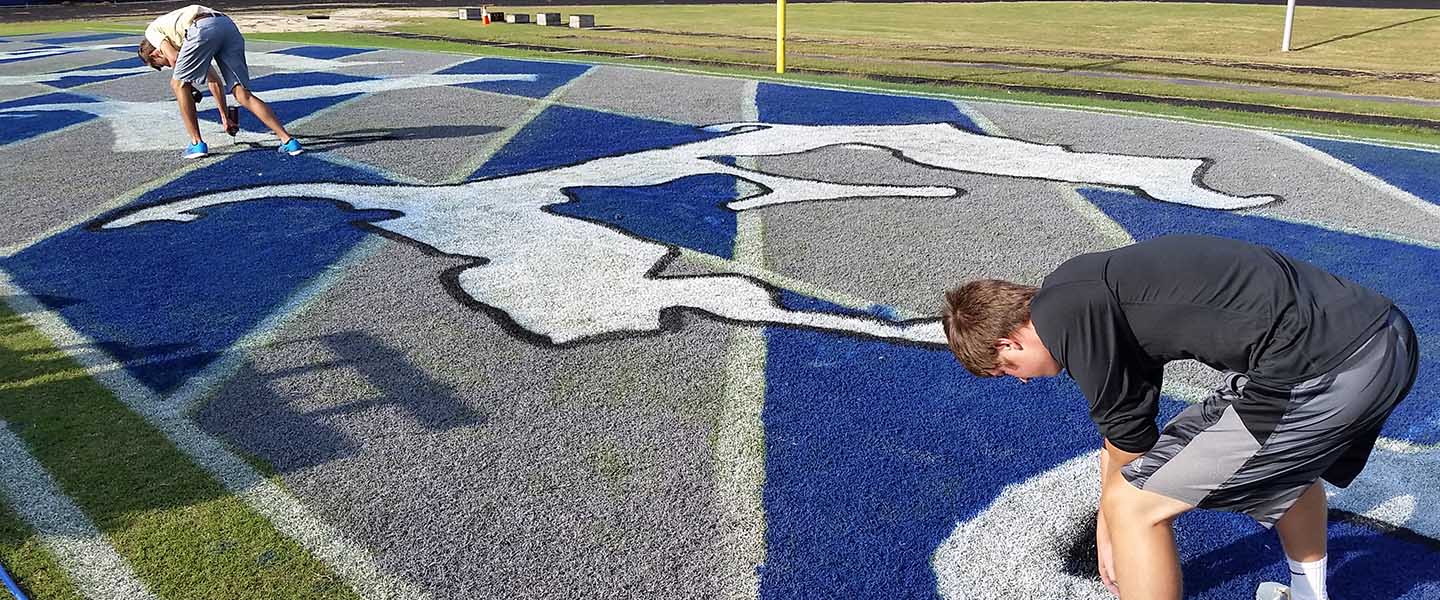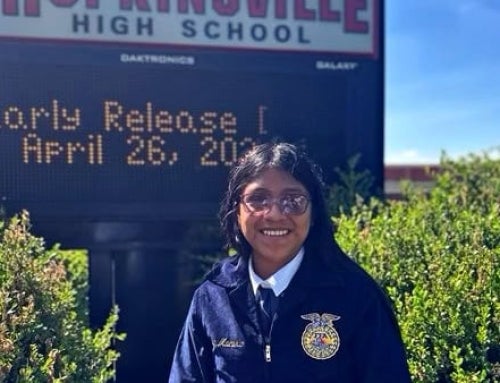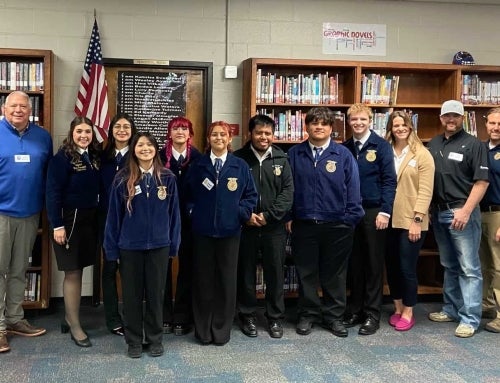Without agriculture, the Super Bowl would likely look different.
Though most professional sports competitions take place on artificial turf, turfgrass management professionals still work hard to ensure the playing field is clean, safe and ready for players, coaches, referees, halftime entertainers and media members. They also paint logos and lines on the turf, an important aspect for not only those actively involved in the game, but also the millions of spectators whose eyes will be glued to the field.
It’s an essential behind-the-scenes job that requires a robust skill set. At Atlee High School in Mechanicsville, Va., FFA members put those skills to work on their own athletic fields as part of the Atlee turf science program.
The program began in 2001. Atlee High School horticulture instructor Marc Moran collaborated with other horticulture teachers across Hanover County, Va., to develop a turf science curriculum. That curriculum was later adopted by the Virginia Department of Education, and Atlee High School became the first school in the state to teach turf science as a recognized course.
Through the Atlee turf science program, students complete coursework in three classes — horticulture, turf I and turf II — while managing, maintaining and renovating all on-campus athletic fields. These hands-on opportunities are educationally valuable, and they also serve as recruitment tools.
“I’m a big sports and outdoors person and getting to work on the fields that my peers and I play on is a big reason I decided to join the turf science program,” says Evan Dupuis, an Atlee FFA member. “I’ve learned a lot, and I’ve enjoyed it so much that I’m interested in pursuing a career as a sports turf manager, something I probably never would have considered if my school didn’t offer turf science courses.”
Dupuis isn’t alone in his sentiments and aspirations. According to Moran, many of his students go on to work in the turfgrass science sector after graduation, and some have even landed internships with professional baseball teams like the Miami Marlins and San Diego Padres.
“Whether our students want to go into the workforce after high school or complete a two- or four-year degree, they have tons of opportunities to get high-paying jobs in this industry,” says Moran, who is also the Atlee FFA advisor. “They can work with local parks and recreation departments in landscaping or field management, for example, or they can become golf course superintendents or work with professional sports teams. There’s no shortage of turfgrass jobs locally and nationally.”
Interested in learning more about the wide variety of opportunities in the turfgrass field? Visit AgExplorer.FFA.org.












